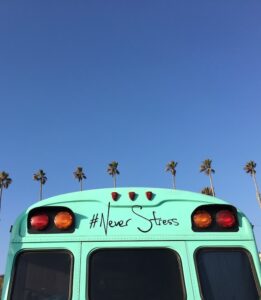In the dense forests of Belize, amidst the vibrant array of wildlife, roams a charismatic creature known for its distinctive long snout and bushy tail – the Coati, or coatimundi. This raccoon-like mammal is a fascinating resident of Belize’s natural landscapes, where it can be spotted foraging for food with remarkable agility and curiosity. In this article, we delve into the captivating world of the Coati, exploring its habits, habitat, and the efforts underway to ensure its conservation in Belize’s rich biodiversity. Join us on a journey through the Coati Chronicles, where nature’s charm meets conservation’s call.
Unveiling the Coati: A Closer Look at Belize’s Enigmatic Coatimundi
The coatimundi, affectionately known as the Coati, is a captivating species that captivates observers with its unique appearance and intriguing behavior. Belonging to the raccoon family, these agile mammals are native to the lush forests and diverse ecosystems of Belize. Their long, slender snout and bushy tail distinguish them, making them easily recognizable amidst the verdant foliage they call home.
One of the most fascinating aspects of the Coati is its social structure and behavior. These creatures are highly social and often live in groups called bands, comprising females and their young. Male Coatis, however, tend to be more solitary and join these bands during mating seasons. This social dynamic creates a complex network of interactions within their community, ranging from playful grooming sessions to coordinated foraging expeditions.
Speaking of foraging, the Coati’s diet is remarkably diverse, showcasing their adaptability to their environment. They are omnivorous, feeding on a wide range of foods including fruits, insects, small vertebrates, and even bird eggs. Their long snout is a versatile tool, aiding in the search for food hidden in crevices or under leaf litter. This scavenging behavior not only sustains their nutritional needs but also plays a crucial role in seed dispersal, contributing to the ecological balance of their habitat.
In terms of physical attributes, Coatis are well-adapted for life in the forest canopy. Their sharp claws and nimble limbs enable them to climb trees with ease, providing access to both shelter and food sources. Their keen sense of smell further enhances their foraging abilities, allowing them to detect food from considerable distances.
Encountering a Coati in the wild is a memorable experience, often showcasing their inquisitive nature and acrobatic skills as they navigate their surroundings. However, despite their captivating presence, Coatis face conservation challenges due to habitat loss and fragmentation. In the next sections, we’ll delve deeper into these challenges and explore the ongoing efforts to protect and preserve the Coati’s habitat in Belize.
Foraging Frenzy: Understanding the Diet and Behavior of Belize’s Coati Population
The diet and behavior of the Coati offer a fascinating glimpse into the ecological role these creatures play in Belize’s vibrant ecosystems. As omnivores, Coatis have a diverse palate, feeding on a wide range of foods depending on availability and seasonality. Their foraging habits are not only essential for their survival but also contribute significantly to ecosystem health.
Fruits form a substantial part of the Coati’s diet, especially during the fruiting seasons of various tree species in Belize’s forests. They are skilled climbers, adept at accessing fruits high up in the canopy where other animals may struggle to reach. This behavior not only provides nutrition for the Coatis but also aids in seed dispersal, contributing to forest regeneration and diversity.
In addition to fruits, Coatis are opportunistic feeders, consuming insects such as beetles, ants, and termites. Their sharp claws and agile movements make them proficient insect hunters, often seen probing into tree bark or leaf litter in search of protein-rich snacks. This insectivorous behavior plays a vital role in controlling insect populations, thereby influencing the balance of the forest ecosystem.
Small vertebrates, including lizards, rodents, and birds, also feature in the Coati’s menu, showcasing their versatility as hunters. While they are not apex predators, their predation on small animals helps regulate prey populations and contributes to the overall ecological dynamics of their habitat.
Interestingly, Coatis exhibit a behavior known as “nose-to-tail” foraging, where they move in a line, using their acute sense of smell to detect food sources. This cooperative foraging strategy not only increases their efficiency in finding food but also strengthens social bonds within their bands.
Observing Coatis during their foraging expeditions is a testament to their adaptability and resourcefulness in utilizing diverse food sources within their environment. However, as human activities continue to impact natural habitats, understanding and conserving the dietary and behavioral patterns of Coatis become increasingly crucial for the sustainability of Belize’s biodiversity.
Conservation Concerns: Challenges and Efforts to Protect the Coati’s Habitat in Belize
While the Coati’s presence adds charm to Belize’s natural landscapes, their survival faces significant challenges due to habitat loss, fragmentation, and human-wildlife conflicts. Understanding these conservation concerns is crucial for devising effective strategies to protect the Coati’s habitat and ensure their long-term survival in Belize.
One of the primary threats to Coati populations is habitat loss and degradation caused by deforestation, agricultural expansion, and urbanization. As forests shrink and fragmentation increases, Coatis face reduced access to food resources, shelter, and safe breeding grounds. This habitat loss not only directly impacts Coatis but also disrupts the intricate ecological balance they contribute to within their ecosystems.
Human-wildlife conflicts also pose a threat to Coati populations, especially in areas where human activities intersect with their habitats. Encounters with vehicles on roads, poaching, and competition for resources can lead to injuries or fatalities among Coatis. Mitigating these conflicts requires collaborative efforts involving local communities, conservation organizations, and government agencies to promote coexistence and minimize negative interactions.
Climate change further exacerbates the challenges faced by Coatis and their habitats. Shifts in temperature and precipitation patterns can alter food availability, disrupt breeding cycles, and impact vegetation dynamics, posing additional stress on Coati populations already facing habitat pressures.
Despite these challenges, various conservation efforts are underway to protect the Coati’s habitat and promote their conservation in Belize. Initiatives such as habitat restoration, protected area management, and community education programs aim to mitigate habitat loss, reduce human-wildlife conflicts, and raise awareness about the importance of Coati conservation.
By addressing these conservation concerns and implementing proactive measures, stakeholders can work together to safeguard the Coati’s habitat and ensure a sustainable future for this iconic species in Belize’s diverse ecosystems.
Final Thoughts
The Coati, with its charismatic presence and vital ecological role, stands as a symbol of Belize’s rich biodiversity and the intricate web of life within its forests. As we conclude our exploration into the world of Coatis, several key reflections and considerations emerge.
Firstly, the Coati’s adaptability and resourcefulness in foraging highlight the resilience of wildlife in adapting to diverse environments. Their diet, ranging from fruits to insects and small vertebrates, underscores their importance as seed dispersers, insect controllers, and contributors to ecosystem dynamics.
Secondly, conservation challenges such as habitat loss, human-wildlife conflicts, and climate change pose significant threats to Coati populations. Addressing these challenges requires collaborative efforts that prioritize habitat protection, sustainable land use practices, and community engagement to ensure the Coati’s continued presence in Belize’s natural landscapes.
Thirdly, conservation initiatives must integrate scientific research, community involvement, and policy interventions to achieve meaningful and lasting impacts. By fostering a deeper understanding of Coati ecology and promoting coexistence between humans and wildlife, we can pave the way for conservation success stories that benefit both biodiversity and local communities.
In essence, the Coati serves as a reminder of the interconnectedness of all living beings and the shared responsibility we hold in conserving and stewarding our natural heritage. By valuing and protecting species like the Coati, we not only preserve biodiversity but also nurture a sustainable future where wildlife thrives alongside human development.
As we bid farewell to the Coati Chronicles, let us carry forward the lessons learned and the passion ignited for conservation, ensuring that Belize’s Coatis and their habitats remain a treasure for generations to come.




